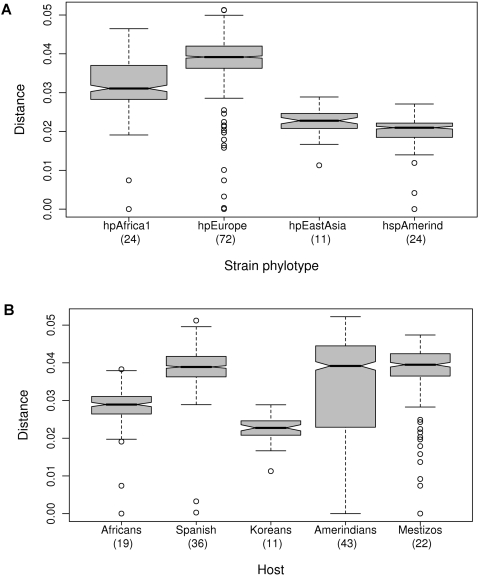Figure 2. Pairwise genetic distances between H. pylori strains grouped by bacterial population (2A), or according to their human host (2B).
Differences in pairwise distances among strains in Fig. 2A were significant (Kruskal-Wallis test, p<2.2×10−16, Wilcoxon and Bonferroni; p<10−14) with a decreasing order hpEurope>hpAfrica1>hpEastAsia>hspAmerind. When grouped by the human host from which each strain was isolated (Fig 2B), strain diversity in Amerindians was as high as in Spanish and Mestizos (with no significant differences among them; Wilcoxon Pairwise comparison p>0.7), with a decreasing order Spaniards = Amerindians = Mestizos>Africans>Koreans. The waist of the dress-like box is the median with the waist side openings indicating the 95% interval for the median; the top represents the 3rd quartile and the bottom the 1st quartile. The interval in dashed lines represents a maximum of 1.5× interquartile range and the open circles are outliers. Permutation tests confirmed group differences in strain diversity.

